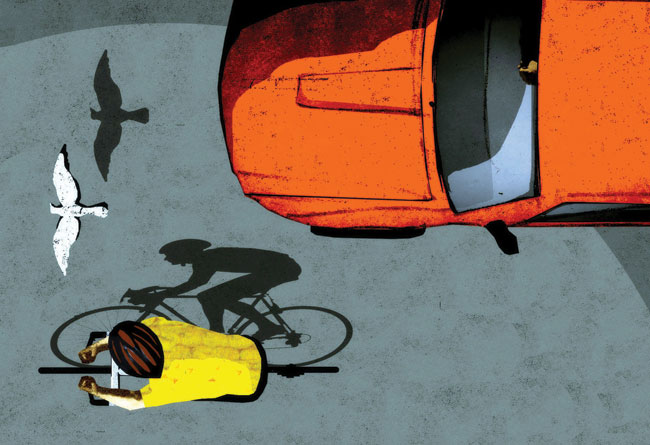Getaround
Making Communities Livable
Investigators studying whether alternative transportation options can create better, more habitable communities

UTA is part of a national initiative to rethink transportation solutions.
The key to creating happy cities may be as simple as stepping away from the concrete mixer. “We can’t just continue to build lanes of highways,” says civil engineering Associate Professor Stephen Mattingly.
“There have to be more comprehensive, more livable solutions out there.” Finding those solutions is part of the U.S. Department of Transportation’s national initiative to develop so-called “livable communities.” As part of this effort, the federal agency is funding a series of University Transportation Centers at universities throughout the country. UT Arlington is working with one at Western Michigan University to develop alternative transportation modes and finding advanced technologies to improve public transportation.
“The aim of the research is to start thinking differently about transportation,” says Dr. Mattingly, who is leading the University’s effort. “We can use technology to enable different lifestyle choices that do not require car ownership.”
He and his colleagues are studying how such technology can improve pedestrian and bicycle safety and are looking at the impact of GPS and cell- phone technologies on driver safety. They’re also researching how social media can be used to shape more sustainable commuting practices; for example, using Facebook to encourage ride-sharing and smartphones to collect transportation and activity information.
“Walking and bicycling represent the most sustainable forms of transportation, and these modes need to be part of future transportation solutions,” Mattingly says. “The center is identifying strategies and technologies to encourage more sustainable transportation choices and to improve their safety.”
Overall, the Department of Transportation will distribute about $63 million in grants to 33 University Transportation Centers. The other members of the center at Western Michigan University are Wayne State University, Utah State University, and Tennessee State University.
Ali Abolmaali, chairman of the Civil Engineering Department, thinks Mattingly’s work has the potential to transform North Texas and beyond. “This research could help travelers in decades to come,” he says. “We need to continue to push the envelope in transportation, coming up with inventive ways to address local and national challenges.”
ILLUSTRATION BY BRIAN STAUFFER

















